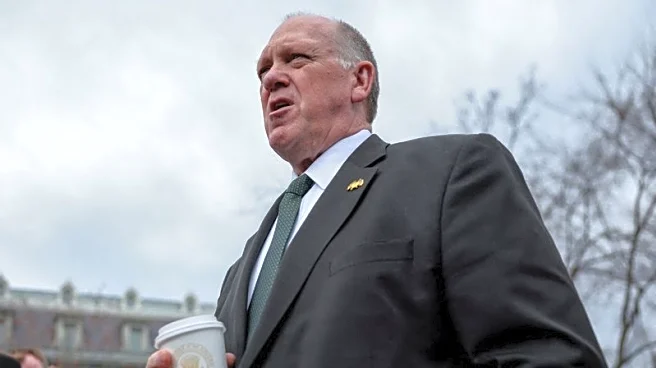What's Happening?
New York City Mayor Eric Adams has announced a pilot program to introduce in-school banking services in 15 high schools across the city. This initiative, involving 12 financial institutions, aims to provide
students with hands-on experience in managing bank accounts. The program will offer workshops on responsible money management and banking, and connect students with career opportunities in finance. The initiative is part of a broader effort to enhance financial education in the nation's largest school district, potentially impacting 350,000 students by 2030. The program is designed to meet the everyday needs of underserved individuals and families, ensuring low account fees, no overdraft fees, and access to online bill payments. It also emphasizes consumer protections, aligning with the BankOn program's benchmarks.
Why It's Important?
The introduction of in-school banking services is significant as it addresses the financial literacy gap among high school students, particularly in underserved communities. By providing practical banking experience, the initiative aims to empower students with the knowledge and skills necessary for financial independence. This program could lead to long-term benefits for students and their families, helping them avoid common financial pitfalls such as overdraft fees and high-interest rates. Additionally, it supports the broader community by offering parents access to financial resources and education, potentially improving their financial well-being. The initiative aligns with the growing emphasis on comprehensive financial literacy education, which includes understanding credit, taxes, investing, and consumer protection.
What's Next?
The pilot program is expected to expand to more schools if successful, potentially reaching a larger portion of New York City's student population. Stakeholders will closely monitor the program's implementation to ensure it delivers high-quality financial products and services. Schools will need to integrate these banking services with comprehensive financial literacy courses to maximize the initiative's impact. The program's success could serve as a model for other districts nationwide, encouraging them to adopt similar initiatives to enhance financial education. Financial institutions involved in the program may also explore ways to offer nontraditional hours of operation to better serve the community's needs.
Beyond the Headlines
The initiative highlights the importance of financial literacy in today's digital economy, where students often use peer-to-peer payment apps without understanding the risks involved. By teaching students the differences between various financial products and services, the program aims to protect them from potential losses associated with unregulated fintech solutions. The initiative also underscores the need for schools to provide comprehensive financial education that goes beyond basic banking skills, preparing students for real-world financial challenges. As the program develops, it may reveal deeper insights into the financial behaviors and needs of underserved communities, informing future policy decisions and educational strategies.












